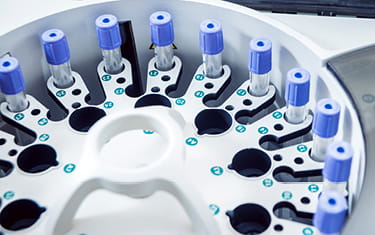What corporate data tells us about future M&A activity
Related people
Headlines in this article
We track a range of metrics to assess the likelihood of future deal activity across sectors. This analysis points to hotspots of M&A in tech, consumer, life sciences and possibly mining in the year to come.
Another way of assessing where deal activity may be concentrated in the months ahead is by analysing corporate data.
We have constructed a model that tracks a range of indicators to assess a company’s likelihood of being involved in M&A.
These include its growth potential (a combination of its revenue growth over the past three years and its projected future growth, among other things) and its deal-making fundamentals (net debt/EBITDA; forward price/earnings ratio; cash ratios plus further data points).
We also track companies' acquisition history (number of acquisitions over the past decade, biggest deal, activity among its peers and more).
By combining and weighting these numbers we are able to generate an M&A score for individual corporates on a scale of one to 10, where those rated 10 have the highest likelihood of being involved in deals.
Comparing M&A scores and market cap reveals potential for acquisitions
We monitor this data in real-time for the 100 biggest companies by revenue across 13 sectors.
Comparing the M&A scores against each corporate’s market capitalisation adds a further dimension by revealing the businesses that have the most capacity to raise acquisition finance through equity issuance.
Plotted as graphs we can create four-box grids where those in the top right quadrant are in the best position to do deals (high market cap, higher M&A score).
Those in the top left are candidates for consolidation (high M&A score, lower market cap), while those in the bottom right may be considering divestments (higher market cap, lower M&A score).
Finally, those in the bottom left are potential targets (lower M&A score, lower market cap).
Tech, life sciences, consumer and mining in the spotlight
The charts below pick out the four sectors (tech, consumer, life sciences, and mining and metals) that show the greatest potential for deal activity.
Despite supply chain issues, revenues among the biggest tech companies continue to grow, and they may see any struggles among smaller innovators in the bottom left as an opportunity to acquire valuable IP.
Likewise, these bottom-left businesses are likely to attract interest from companies outside the sector.
In consumer, many of the top 100 are seeing revenues rise slowly, if at all, although the biggest players have the financial firepower to acquire top-line growth.
In consumer, distress and the need to adjust to the tougher economic climate is expected to drive consolidation in the year ahead.
Many of the top 100 are seeing revenues rise slowly, if at all, although the biggest players have the firepower to acquire top line growth.
A significant proportion of the top 100 also carry M&A scores above five, suggesting a cohort primed for M&A.
Patent cliffs put pharma revenues at risk
After a quiet H2 for M&A, life sciences and healthcare deal-making appears set for a rebound in 2023.
The major players are cash-rich, biotech valuations are normalising after a bullish few years, and patent cliffs put approximately USD180bn of the biggest pharma companies’ revenues at risk between now and 2028.
Finally, the number of mining companies in the bottom left of our chart points to the possibility of M&A activity in 2023, not least because of rising demand for raw materials and fears over security of supply (car makers for example have taken to signing deals directly with miners to guarantee provision of the materials they need for EV batteries).
Around USD400bn of investment in critical minerals is needed by 2030 to meet climate goals, while Saudi Arabia has announced it is planning to invest USD32bn in the sector.








